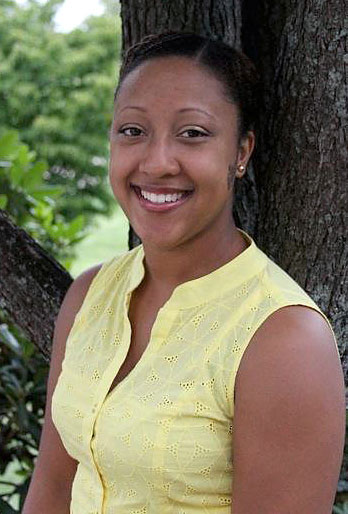
Admission to Massachusetts’ flagship campus has become more competitive than ever before. The average GPA for entering freshmen at UMass Amherst now stands at 3.83, a sign of the University’s growing attraction for students and families and a source of great pride for alumni and other supporters. As admission standards have tightened, staff, faculty, and students from all areas of campus have voiced concerns about diversity. How does UMass Amherst compare to its peer institutions in this regard? Does the student body reflect the demographics of the state?
According to the most current US Census data, 10.8% of Massachusetts residents are Hispanic/Latino, 8.3% of Massachusetts residents are Black/African American, .5% are Native American/Alaska Native, and .1% are Hawaiian/Pacific Islander. At the University, 6% of undergraduates are Hispanic/Latino, 4% of undergraduates are Black/African American, and less than 2% are either Native American/Alaska Native or Hawaiian/Pacific Islander. At first pass, these comparisons may cause alarm: much of the frustration voiced on campus concerning “compositional diversity” has centered on these data. After digging deeper, however, it has become clear that the data are only part of the story. In the fall of 2014, Chancellor Kumble Subbaswamy organized constituents from across campus to help create the Diversity Strategic Plan. A Steering Committee shed light on many misconceptions about the data, noting that our applications were increasing across all ethnic and socio-economic groups and that we were on par with our peer institutions in terms of numbers. Over the previous ten years, our applications had grown by 184%, from 20,207 in 2005 to 37,183 in 2014.
“During this period, while total applications grew by 184%, applications from Latino, African American Indian/Alaska Native and Native Hawaiian/Pacific Islander students grew by a remarkable 335%,” the authors of the Diversity Strategic Plan wrote. Additionally, in a chart comparing UMass Amherst to our peer institutions, the data indicated that “…nearly all public universities have representations (of students of color) below that of their states—in many cases, substantially below. In fact, only three of these institutions have enrollments that equal or exceed those of their states, and all three are schools in states with very low (underrepresented) populations and that enroll a large number of out-of-state students.”
The Diversity Strategic Plan acknowledged that while the University’s rapid growth was good news, it could not abandon additional efforts to both expand the recruitment and to yield (convert to deposits) the students of color we were attracting. And so, we’ve begun shifting our focus and emphasizing the use of a holistic review process to consider our applicants. By broadening the scope of attributes used in making a decision about an applicants’ candidacy, we empower our applicants and our team of admissions counselors. Applicants are no longer reduced to a test score or a grade point average. Admissions counselors become agents of advocacy with an expertise that goes beyond number-crunching. By applying a qualitative method to each application we review, we are diversifying our campus community in measures beyond the merely compositional.
"Diversity is about much more than race or ethnicity for UMass Amherst. Diversity is about the opportunity to be in a classroom, a dining hall, a residence hall, or a playing field that brings with it people from various geographical locations, religious affiliations, political parties, socio-economic statuses, and gender (non)identities."
What qualitative methods add to a review process is the opportunity for the applicant to tell us exactly why we should believe in them, their story, and their potential. We know that for the entering class of fall 2015, 20% came from low-income (Pell-eligible) homes, and that 24% were the first in their families to go to or graduate from college. These students are no less attractive to us because they come from fewer resources. In fact, we want students who have demonstrated an ability to navigate communities, schools, and situations that are far from perfect because we know these students to be resilient. They can handle the stressors of academic life while simultaneously juggling responsibilities at home and in the world—skills essential to success in college and beyond.
One of the biggest criticisms any institution faces when employing a holistic application review process is the idea that it will unequivocally lead to the “watering down” of the admitted student pool. The assumption is that we’d have to lower our grade point averages and standardized testing credentials to admit more students of color. These accusations are far from true, as demonstrated by our ever-rising average GPA for admitted students. Moreover, we have made strides in the composition of our classes. In the 2016 admissions cycle, over 10% of the students admitted to the Commonwealth Honors College (CHC) are underrepresented minorities, up from 8% on the 2015 cycle. First generation to college students were also up from 13% of the CHC admits to 15%. In numbers, this means we admitted just under 200 more students from underrepresented and first generation to college backgrounds this year than last—all made possible by the use of qualitative methods, or the holistic review process.
Why is any of this important? Beyond the fact that students across our nation are crying out to see themselves reflected in both the student and faculty bodies of their institutions of higher education, colleges and universities have a civic duty to educate global citizens. The value of learning in a diverse community links directly to this obligation and, in fact, benefits all students. Diversity is about much more than race or ethnicity for UMass Amherst. Diversity is about the opportunity to be in a classroom, a dining hall, a residence hall, or a playing field that brings with it people from various geographical locations, religious affiliations, political parties, socio-economic statuses, and gender (non)identities. For us, pursuit of a diverse community implores us to provide our students with a chance to open their minds to a world of difference.